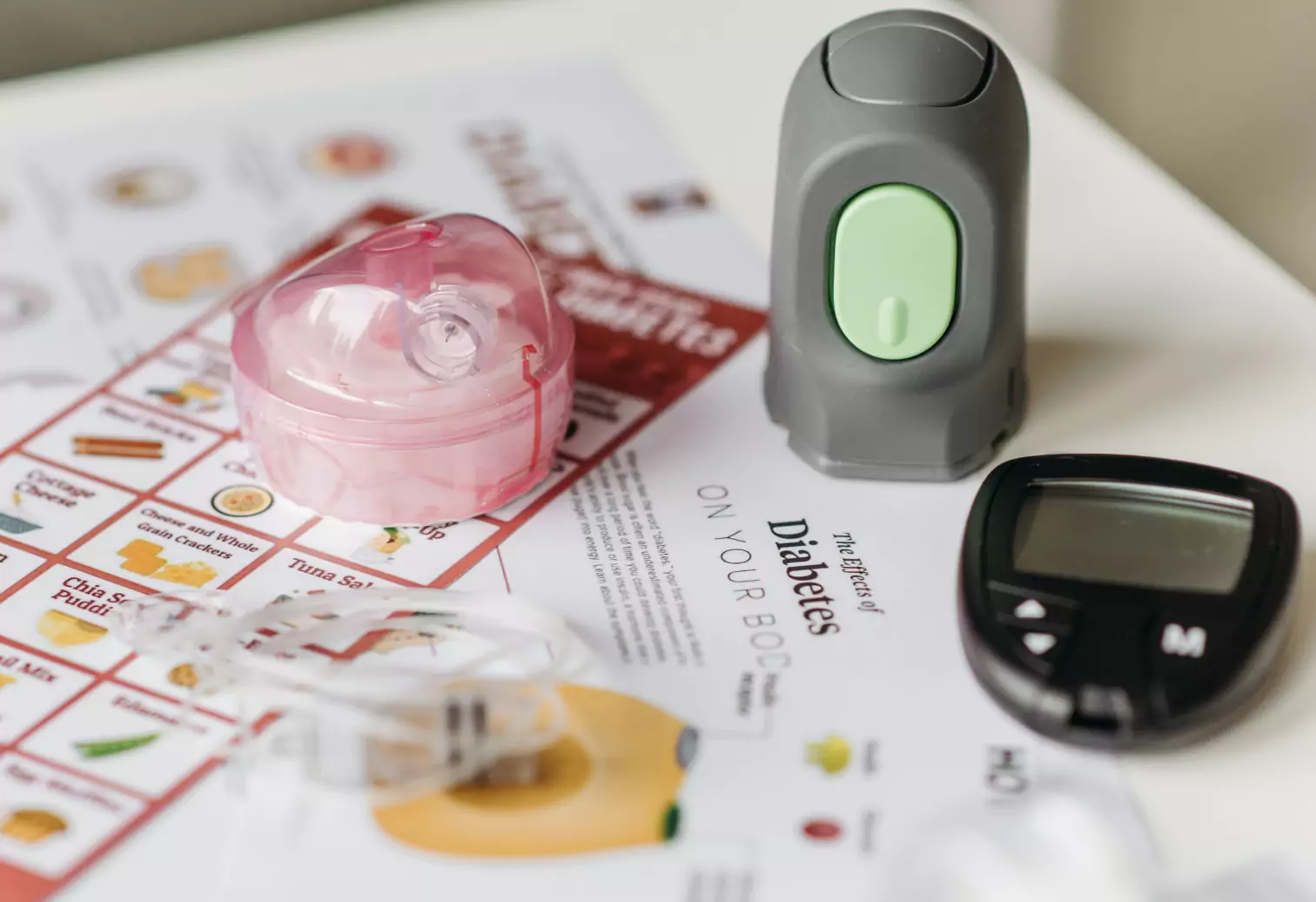Navigating a Diabetes Diagnosis: How to Support a Loved One

Key Takeways
Diabetes, like many other chronic illnesses, requires a lot of care, time, support, and lifelong maintenance. Prediabetes, type 1, type 2, and gestational diabetes can significantly impact your physical and mental health.
And these conditions can also affect the people who live with you! It can be hard to watch a loved one navigate a health condition, and the desire to help can be overwhelming.
One challenging aspect is helping family members navigate life before a diagnosis. But you can be a valuable resource and pillar of support for everything from recognizing the symptoms to making that initial doctor’s appointment.
Though it can be challenging to start a conversation with a loved one about their health, it’s often crucial to do so. Luckily, there are many ways to help if you believe a family member or loved one might be at risk of diabetes. Read on to find out more.
What is Diabetes?

Diabetes is a chronic condition that affects how your body uses blood sugar or glucose, a crucial component of your body’s energy. When your blood sugar spikes, your pancreas releases insulin, allowing glucose to enter your cells to be used as energy.
When you have diabetes, your body does not make enough insulin or cannot use it effectively; your cells cannot absorb glucose from your bloodstream. It remains in the bloodstream, leading to other health issues like kidney failure, vision loss, and heart disease.
Types of Diabetes
To help a loved one navigate diabetes, it’s best to know a little more about the condition, including refreshing your knowledge about the different types. Here’s more on type 1, type 2, and gestational diabetes.
Type 1 Diabetes
Type 1 diabetes is most often diagnosed in children, teens, and young adults. It’s likely due to an autoimmune reaction in the body that reduces or stops the body’s ability to produce insulin. While it’s not currently preventable and has no cure, several management techniques help you with the condition. About five to 10 percent of people with diabetes have type 1.
Type 2 Diabetes
About 90 to 95 percent of people with diabetes have type 2 diabetes. Type 2 diabetes is most often diagnosed in adults but is increasingly being diagnosed among children, teens, and young adults.
Type 2 diabetes generally develops over several years. The symptoms can be hard to detect, so your loved one needs to have their blood sugar tested by their doctor if they think they are at risk. Some research suggests that you may be able to prevent and reverse type 2 diabetes with lifestyle changes like regular exercise, healthy eating, and weight management.
Gestational Diabetes
Gestational diabetes typically develops among pregnant people who have never had diabetes. It’s caused by changes in the body’s sensitivity to insulin. Gestational diabetes affects 2 to 10 percent of pregnancies per year in the United States.
For many women, it may resolve after the baby's birth. Gestational diabetes increases the risk of developing type 2 diabetes later in life, both for the pregnant parent and the baby.
Prediabetes
Prediabetes affects approximately 96 million American adults. Someone is considered prediabetic if their blood sugar levels are higher than normal but not high enough to be considered type 2 diabetes.
People with prediabetes are at high risk of developing type 2 diabetes if they don't make lifestyle changes, like dietary changes.
How to Tell if a Loved One is At Risk

It’s important to be aware of the risk factors of diabetes and prediabetes so your loved ones can make educated decisions for their health. Prediabetes can go undetected for years, sometimes until it becomes a more serious health problem, such as type 2 diabetes.
Race and ethnicity can also play a role: research shows that some African American, Hispanic or Latinx, American Indian, or Alaska Native people are at higher risk of developing type 2 diabetes or prediabetes, as well as some Pacific Islander and Asian American people.
Here are some signs and risk factors for type 2 diabetes or prediabetes to watch out for in a loved one:
- Your loved one is overweight.
- Your loved one is 45 years or older.
- Your loved one has an immediate family member with type 2 diabetes.
- Your loved one is physically active less than three times a week.
- Your loved one has had gestational diabetes or has previously given birth to a baby over 9 pounds.
- You notice they’re thirstier or hungrier than usual.
- Your loved one seems to be urinating more frequently.
- You see that they have suddenly lost or gained a significant amount of weight.
- Your loved one complains of blurry vision.
- Your loved one complains of fatigue.
- Your loved one seems more irritable than usual.
- You notice they have slow-healing sores or frequent infections.
- Your loved one has non-alcoholic fatty liver disease.
- Your loved one has polycystic ovarian syndrome.
Unlike type 1 diabetes, you can prevent prediabetes and type 2 diabetes with lifestyle changes like eating a healthy diet, regular physical activity, and weight management.
While there's no cure for diabetes, you can manage it and, in certain situations, reverse it. So, it’s essential for your loved ones to get their blood sugar tested if they believe they are at risk of type 2 diabetes or prediabetes.
Tips to Support a Loved One with Type 2 Diabetes or Prediabetes
Wondering how you can help a loved one deal with diabetes or prediabetes? Here are a few tips to help you show you care without stifling or overwhelming them:
Support Them Through a Diagnosis

Whether it’s diabetes or another chronic condition, your loved one will need support and care. After all, you don’t want them to feel like they have to go through the challenges that come with chronic conditions on their own. Learning about and showing an interest in their condition is a significant way to show support.
Ask them if you can accompany them to a doctor’s appointment or do some research on your own. Learning about diabetes or prediabetes will not only show them that you care, but the information will also allow you to support them when they are experiencing the symptoms of diabetes, such as low or high blood sugar.
It will also help you make informed decisions if a diabetes-related emergency should arise.
Participate in Their Lifestyle Changes
Managing type 2 diabetes or prediabetes can require many lifestyle changes, and it can be much easier to form new habits with someone else by your side.
Offer to help your loved one make a meal plan, shop for healthy snacks for them, or take a cooking class together. Accompany them to the gym, go for walks together, or help them make an exercise plan that fits their schedule and needs.
Help Your Loved One Manage Stress
Stress can be a significant factor in managing blood sugar levels for type 2 diabetes or prediabetes. Support your loved ones in managing their stress through meditation, deep breathing exercises, or physical activity, like going on relaxing walks or doing yoga.
Sleep can also be an essential factor in managing stress. Help them adopt a relaxing bedtime routine, such as limiting screen time after a certain time. Attending a diabetes support group together can be a great way to connect with a community of people who understand the condition, which can also help ease stress.
Be Aware of Mood Changes

Blood sugar changes can impact mood. Your loved one may get irritable, angry, anxious, or confused when their blood sugar levels change.
Offer your loved one emotional support and grace in these times. Blood glucose levels also increase the risk of mood disorders, such as anxiety and depression.
If their mood changes are frequent or unmanageable, it may be helpful to suggest they speak to a counselor or attend a diabetes support group.
Avoid These Mistakes

We all want to be as supportive as possible to our loved ones, but too much support or the wrong kind can drive them away. Don’t turn into the diabetes police! Here are some mistakes to avoid when trying to support your loved one:
- Don’t offer unwanted advice. Show your loved ones that you trust them to manage their condition by giving them space.
- Don’t nag your loved one about exercise or police what they eat. No one wants to feel like they are under surveillance.
- Don’t share details of your loved one’s condition without their permission. They choose what they wish to share about their health, when, and with whom.
- Don’t blame every mood change on their blood sugar levels. Your loved one is still a human being with feelings entirely unrelated to their condition.
Like many health conditions, diabetes management takes time and resources. Diabetes or prediabetes diagnoses can be highly stressful for you and your loved one.
Luckily, there are many ways to prevent or manage these conditions. Your strength, support, and encouragement can make an incredible difference in both of your lives and has the potential to bring you and your loved one closer than ever.
Find the right Nutrisense programto turn insight into progress.
Go Beyond Glucose Data with Nutrisense
Your glucose can significantly impact how your body feels and functions. That’s why stable levels are an important factor in supporting overall wellbeing. But viewing glucose isn't enough. Nutrisense, you’ll be able to learn how to use your body's data to make informed lifestyle choices that support healthy living.
One-to-one coaching
Sign up to access insurance-covered video calls to work with a glucose expert: a personal registered dietitian or certified nutritionist who will help tailor your lifestyle and diet to your goals.
Monitor and measure what matters
With the Nutrisense CGM Program, you can monitor your glucose with health tech like glucose biosensors and continuous glucose monitor (CGM)s, and analyze the trends over time with the Nutrisense App. This will help you make the most informed choices about the foods you consume and their impact on your health.
Find your best fit
Ready to take the first step? Start with our quiz to find the right Nutrisense program to help you take control.

Heather is a Registered and Licensed Dietitian Nutritionist (RDN, LDN), subject matter expert, and technical writer, with a master's degree in nutrition science from Bastyr University. She has a specialty in neuroendocrinology and has been working in the field of nutrition—including nutrition research, education, medical writing, and clinical integrative and functional nutrition—for over 15 years.




